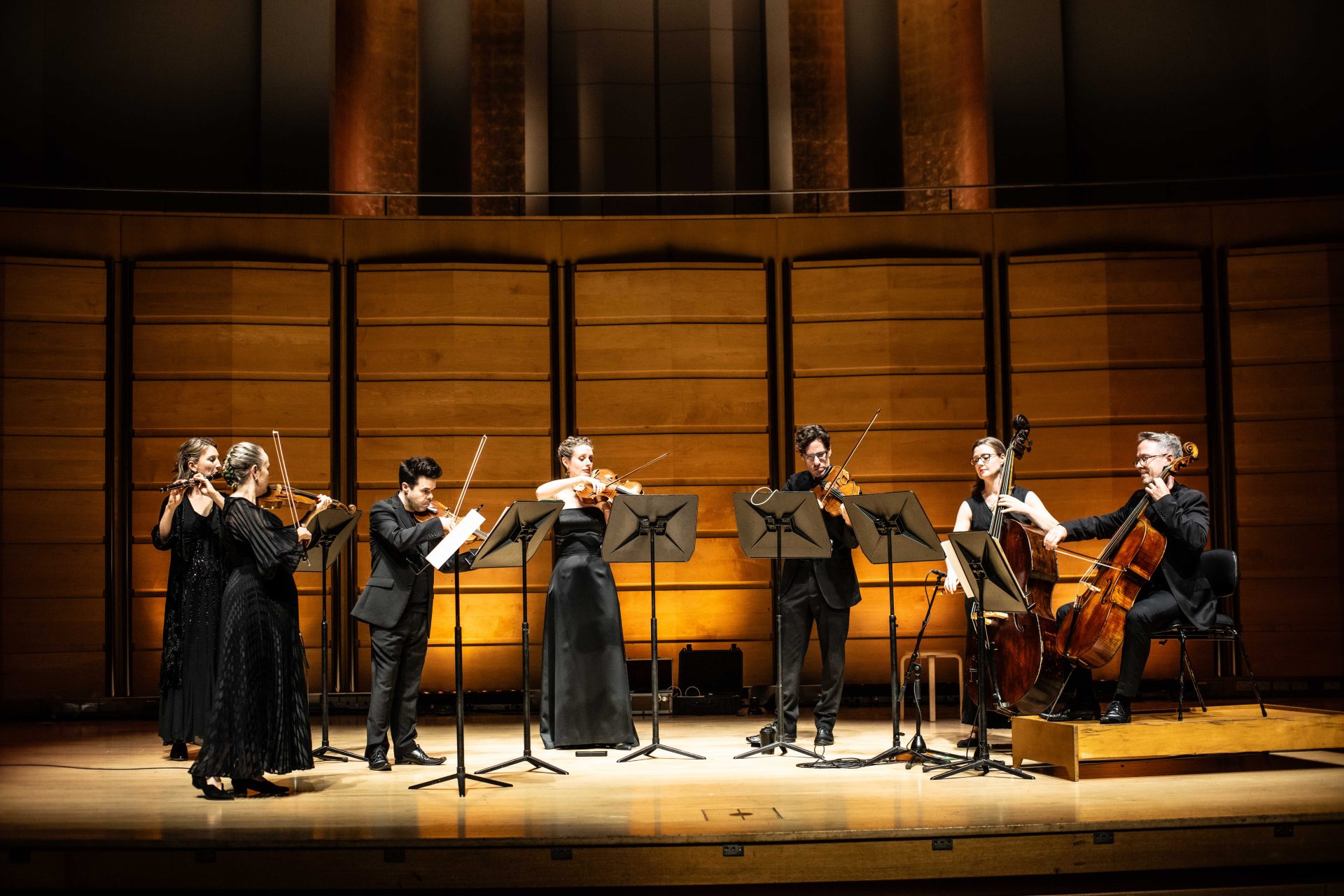This concert was a celebration of what the Australian Haydn Ensemble does best – arrangements of symphonic music for the more intimate forces of the chamber ensemble.
Beethoven’s Egmont Oveture was first. This was an arrangement by 19th century violinist and entrepreneur Nicolas Mori (1796-1839) published by the London publisher Lewis Henry Lavenu. Despite the arrangement, it began with the unmistakable drone of the F minor chord, which was intended to depict an imprisoned Count Egmont. The gradual unshackling of what Beethoven thought to be the universal human subject climaxes to a dramatic but still tragic motif that is doubled deftly by Melissa Farrow on flute. As with many other Beethoven overtures, it wavers between brooding and jubilant. The shimmering tremolos by Matthew Greco on violin were a highlight.
Unsurprisingly, Boccherini’s Quintet in C minor, Op 10 No 3, was lighter and more genial than what came before. The work is interspersed with light rhythmic episode, and is imbued with the fiery spirit of Spanish street songs (unsurprisingly for a composer who composed a set of works entitled Musica notturna delle strade di Madrid). The motif is a simple chord progression where the rhythm descends gradually and daintily, as though it is smiling at the audience. In true Spanish style, there is that delicious chiaroscuro effect given by switching rapidly between major and minor modes. The crisp trills and turns were executed perfectly by Greco and synchronised well under Skye McIntosh’s masterful direction. The second movement was not particularly interesting, but, in true Boccherini style, the third and fourth movements gave moments for Daniel Yeadon on the cello to shine through.
After a short intermission came another arrangement, this time of Beethoven’s Symphony No 7 in A major. The persistent upwards movement of the symphony’s first movement was accentuated well by the strings. But the highlight was certainly the Allegretto. It is a fugue, based curiously on an old Baroque theme – the descending chromatic fourth. That theme was given the undignified title of passus duriusculus (meaning ‘hard suffering’) because of its almost weeping harshness. Even without the emphatic force of the timpanis to reinforce the buildup of voices. Jacqueline Dosser on double bass did very well in reinforcing the foreboding drone of the bass that grounds that brooding fugue. The Presto seemed like something out of an Italian opera of the time.
We look forward to the AHE wowing American audiences on their US tour, to celebrate their 10th anniversary, which includes a performance at New York’s Carnegie Hall as well as a performance at the opening of the new Australian Embassy building in Washington.
